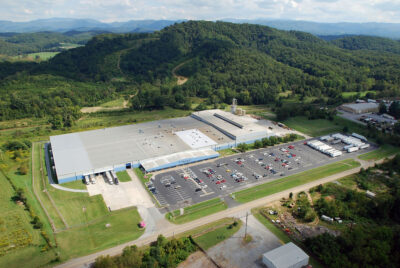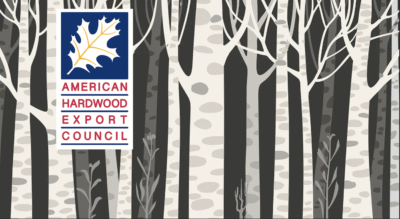Contacts report mixed levels of sales of kiln-dried lumber. Some say they are good, some describe them as fair, and others as slow depending on areas contacted. White Oak and Walnut were reported to be moving well. The regionally important species Hard and Soft Maple sales of upper grades were also moving well. Industry contacts reported improved demand for No. 1 Common Hard Maple. Basswood and Hickory were not doing as well, however. Cherry sales on domestic markets are low, with exports to China faring somewhat better. Supply is meeting demand for Red Oak. It was noted that Poplar was abundant for certain grades and thicknesses.
Ash demand has gone down, due to competition from other species and other non-wood products taking over its market share. Ash is doing better on export markets, but demand is still not high.
As Basswood is not seen as a species of choice, inventories are not very high on domestic and international markets. Despite that, supplies are noted to be readily available for most grades and thicknesses.
Cherry demand is mostly based on sales to established customers both domestically and on international markets. Production and demand for this species are low at this time, keeping supplies manageable.
Moulding manufacturers and millworkers were purchasing decent supplies of Poplar, although demand is not strong from other end users such as wood and upholstered furniture. Exports are also noted as down, and so supply is outpacing demand.
Hickory demand is very slow for kiln-dried products. Green Hickory is moving to residential flooring manufacturers, but is slow to other markets.
The regionally important Hard Maple reports continue to be positive with upper grades performing well, while common grades reports are mixed with some reporting sales as brisk or good. Some sawmill contacts are having difficulty keeping up with orders of upper grades of Soft Maple.
Red Oak demand on domestic and international markets are keeping inventories in check and prices firm. Wholesalers have been buying more quantities of green No. 1 Common and Better Red Oak. Flooring manufacturers are also increasing supplies for the spring and summer construction seasons. Supply and demand are driving business for White Oak, and businesses were looking for more supplies all along the supply chain.
Walnut is doing well in domestic markets and to China, as it is a species of choice by consumers for flooring, high-end furniture and other product applications. Prices are firm, with pricings having risen for kiln-dried upper grades.
Contacts said framestock business was slow, with order files thin. Pallet sales were reported as good. Most have adequate or high inventories.
The American Hardwood Export Council (AHEC), in cooperation with the National Hardwood Lumber Association (NHLA), released a video workshop to provide a “simplified but informative explanation” of the NHLA grading rules for American Hardwood lumber. The workshop is presented by Dana Spessert, the NHLA chief inspector.
NHLA has developed and updated internationally recognized Hardwood lumber grading rules for more than 150 years. AHEC incorporates those standards in promoting American Hardwood exports to companies around the world. AHEC also published the Guide to Sustainable American Hardwoods.
According to housing trend reports from the National Kitchen and Bath Association and various other organizations, wood and wood looks are making a comeback in kitchen cabinet designs. The demand in some sectors has been strong and was seen as dethroning the white kitchen that dominated these past several years. The painted finish trend of several years ago is replaced for wood and the “look” of wood (products that look like wood), which go for a more natural look and feel, either using solid wood or laminated wood.
At the top of the list is wood grain, followed by painted surfaces, and then natural high-texture wood, and wood patterns or fluted finishes. Lighter wood tones are topping demand as well. The darker tones of the past are now bottom of the list.
The top four leading design styles cited by members of the NKBA were Transitional/Timeless, Contemporary/Modern, Organic/Natural, and Mid-Century/Scandinavian, with overlaps noted between the varying styles.
Designers suggest the driving forces for today’s designs include a desire for more connection to the outdoors and natural world — larger windows, more glass, and warmer colors, and gold tones and blacks for plumbing rather than chrome and stainless finishes. Consumers also want a kitchen that is unique to them and meets their needs.
According to NKBA members the top color for 2024 will be green, followed closely by wood. Next are white, blue, gray, and brown to round out the top six color choices. There is also a growing trend to combine colors or to add bursts of color to offset more muted wood tones or monochrome paint schemes. Cleaner lines are also in demand. Modern European or flat panel doors are the top item, followed by similar unadorned Shaker-style doors. The increasing use of frameless, Euro-style, or “full-access” cabinet construction over traditional face-frame construction is another reflection of the “clean lines” trend in kitchens for 2024.
Kitchen islands are a must as the kitchen is the social center, and the island is the heart of the kitchen. It holds more built-in appliances, beverage centers and wine refrigerators, with cooking and seating areas for socializing. Another important feature are pantries, walk-in and butler pantries are popular, with some having a door disguised as another cabinet door, as opposed to open-shelf pantries.
Ecological options are also a concern to consumers which includes recycling storage containers. Other environmentally conscious trends include selection of sustainable materials, longer lasting products, and energy efficient appliances and lighting. For remodeling projects, there has been an increasing trend to donate old cabinets for reuse rather than just relegating them to a dump or transfer center for disposal.
This return to wood trend bodes well for the Hardwood sector as consumers increasingly demand wood and wood-related products for their kitchens.






